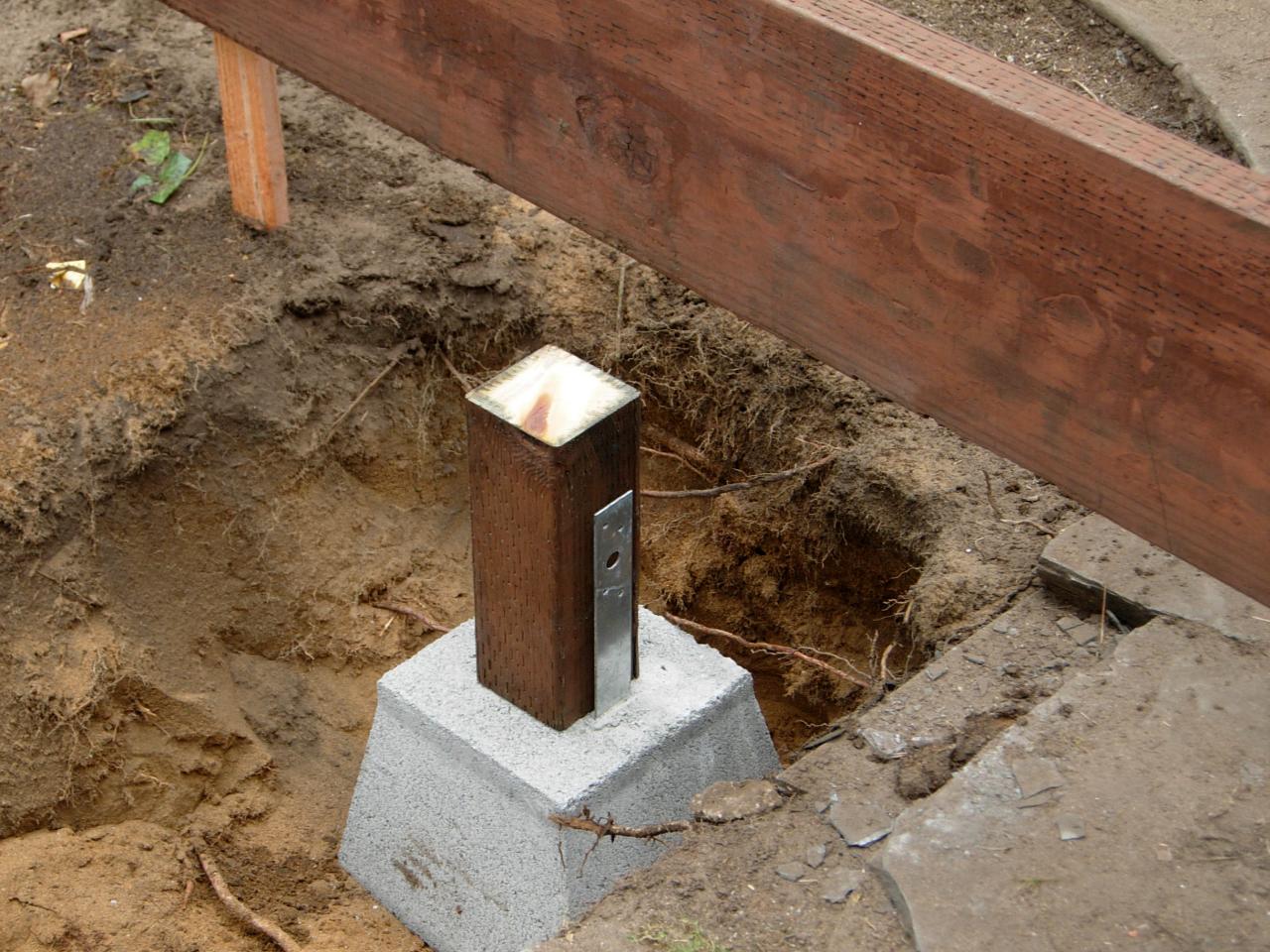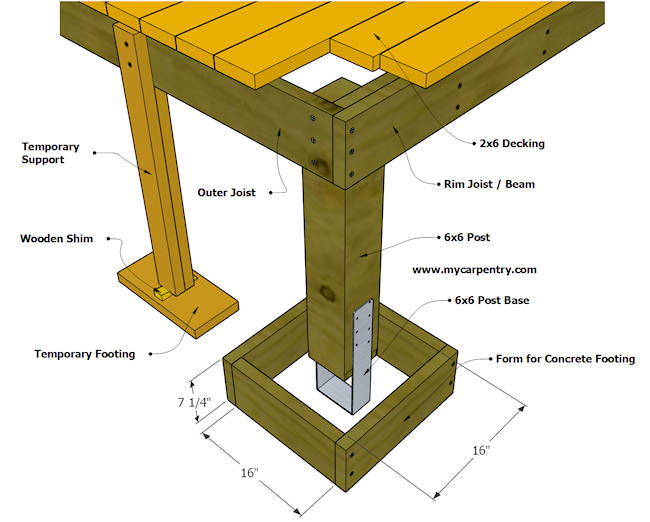Step-by-Step Deck Quality: Making Certain Security with Effectively Mounted Deck Footings
Wiki Article
Selecting the Right Deck Footings for Stability and Longevity
When it involves constructing a deck, one of the most vital choices you will certainly make is choosing the best grounds for stability and toughness. The longevity and safety of your deck depend heavily on the kind of footings you choose, as they offer the necessary support and security to endure the test of time. With a myriad of options available, it can be overwhelming to figure out which footings are best fit for your certain needs. In this conversation, we will certainly explore the different sorts of deck footings, take into consideration the vital aspects to consider when making a decision, and look into the benefits and drawbacks of different alternatives. By the end, you will certainly have a clearer understanding of the selections handy and be much better outfitted to make a notified decision for your deck task.Kinds Of Deck Grounds
These footings are composed of a cylindrical opening filled up with concrete, which gives a solid structure for the deck posts. Concrete pier grounds are fairly easy to mount and supply excellent stability, making them a prominent selection for many deck jobs.These footings are mounted by screwing them into the ground, which produces a safe and secure structure for the deck. They likewise enable for very easy adjustment and leveling of the deck if required.
Additionally, some home builders select precast concrete footings. These footings are made of long lasting concrete and be available in numerous shapes and dimensions to fit various deck layouts. Precast concrete footings are practical to set up and offer a secure base for the deck framework.
Lastly, an additional choice is the post-in-anchor footing system. This kind of ground involves driving a steel support right into the ground and attaching it to the deck message. It provides flexibility in terms of placing the deck messages and is suitable for decks with light-weight frameworks.
When picking the appropriate kind of deck footing, it is vital to consider variables such as soil problems, deck load, and regional building regulations (Deck Footings). Consulting with an expert specialist or structural designer can aid guarantee the proper ground is chosen for a secure and secure deck
Factors to Think About When Selecting Footings
When picking the ideal footings for a deck, it is essential to carefully consider numerous factors such as soil problems, deck lots, and adherence to neighborhood building regulations. These variables play a considerable role in making sure the security and sturdiness of the deck structure.Among the main factors to take into consideration is the dirt conditions. The kind of dirt on which the deck will certainly be constructed figures out the sort of grounds needed. For instance, decks constructed on loose or sandy dirts might need much deeper footings to give appropriate support and avoid settling. On the various other hand, decks built on clay or extensive soils may need grounds that can accommodate the dirt's propensity to increase and contract.
Another essential factor is the deck tons. The weight of the deck, including the products made use of and any type of possible real-time tons such as furniture or events, must be taken into consideration when selecting grounds. The grounds must be made to bear the weight of the deck and disperse it equally to stop any kind of structural concerns or failures.
Lastly, adherence to local building codes is extremely important. Building ordinance differ from region to area, and it is important to abide by the particular next page needs established by the local authorities. Deck Footings. These codes ensure that the deck is constructed safely and satisfies the essential requirements for architectural stability and load-bearing capability
Concrete Grounds: Benefits And Drawbacks

Concrete footings provide numerous benefits and negative aspects when used as the foundation for a deck. On the favorable side, concrete grounds offer excellent stability and toughness.
One more benefit of concrete footings is their versatility. They can be put right into various forms and sizes to suit different deck designs and configurations. Concrete footings can be customized to fit the certain demands and requirements of the deck framework.
Nonetheless, go to this web-site there are likewise some disadvantages to using concrete footings. One major drawback is the price and labor associated with their installation. Concrete grounds call for excavation and typically need the support of hefty equipment. This can boost the total expense of the deck project and may require expert help.

Helical Piers Vs. Sonotubes: Which Is Much better?
In taking into consideration the foundation alternatives for a deck, the comparison between helical piers and sonotubes is critical in determining the remarkable selection. They are twisted into the ground making use of hydraulic equipment, providing a durable and secure structure for the deck.The helical plates on the piers develop a solid grip with the dirt, preventing any kind of motion or moving of the deck. Sonotubes, on the other hand, depend solely on the concrete filling for security, which may not provide the same degree of stamina and resistance.
In terms of installment, helical piers are relatively easier and faster to set up contrasted to sonotubes. The hydraulic equipment utilized to turn the piers right into the ground ensures a quick and reliable procedure. Sonotubes, on the other hand, need digging openings and pouring concrete, which can be labor-intensive and lengthy.
Additionally, helical piers are a more functional alternative. If needed, they can be used in different dirt conditions and can be readjusted or enhanced. Sonotubes, on the various other hand, may need added support, such as rebar, in particular soil problems or areas with high tons requirements.
Picking the Right Footings for Your Deck's Measurements
For optimum architectural stability, it is important to thoroughly choose the appropriate footings that straighten with the measurements of your deck. The measurements of your deck, including its size, size, and height, play a substantial role in determining the type and size of grounds required.When choosing grounds for your deck, it is crucial to think about the load-bearing capacity of the soil. The weight of the deck, incorporated with the weight of any kind of furnishings or individuals on it, puts in a substantial force on the grounds (Deck Footings). It is crucial to pick grounds that can appropriately sustain this weight without shifting or sinking over time.
The dimension and shape of the grounds must also be taken into consideration. Larger decks with greater view it now dimensions require bigger footings to provide enough stability and support. The form of the footings, whether they are square or round, depends upon the style and layout of the deck. Furthermore, the deepness at which the footings are installed need to be identified based upon the frost line in your area to protect against any kind of heaving or changing as a result of freezing temperatures.
Final Thought
In conclusion, selecting the best deck grounds is vital for making sure stability and toughness. Factors such as the kind of footings, the deck's dimensions, and the pros and disadvantages of different options need to be thought about.These footings consist of a cylindrical opening filled with concrete, which gives a strong structure for the deck posts. Concrete pier footings are relatively simple to set up and provide exceptional security, making them a preferred selection for many deck projects.
Precast concrete footings are practical to install and supply a secure base for the deck structure.
It supplies adaptability in terms of positioning the deck blog posts and is suitable for decks with light-weight structures.
Concrete footings supply a number of advantages and negative aspects when utilized as the structure for a deck.
Report this wiki page